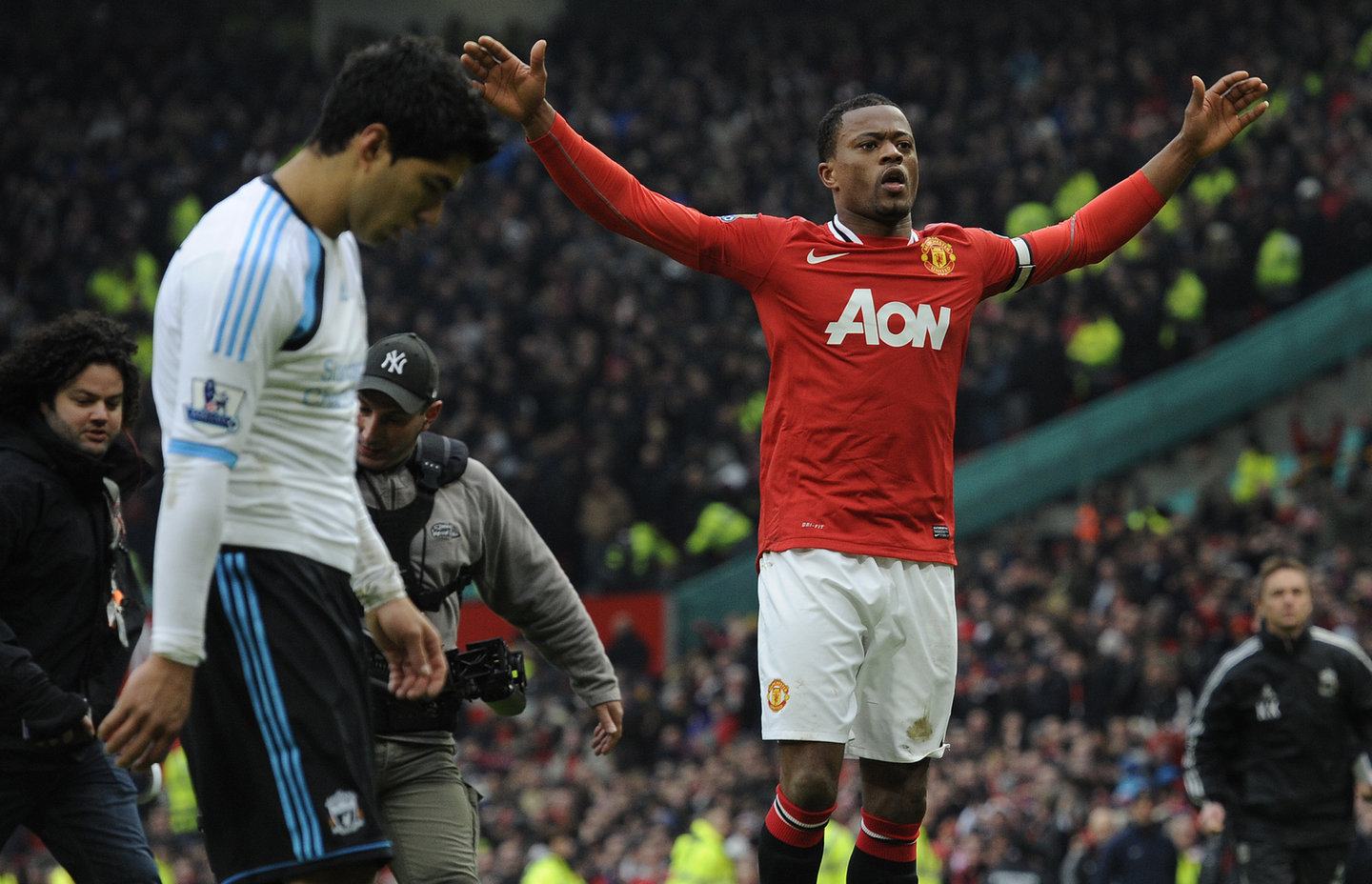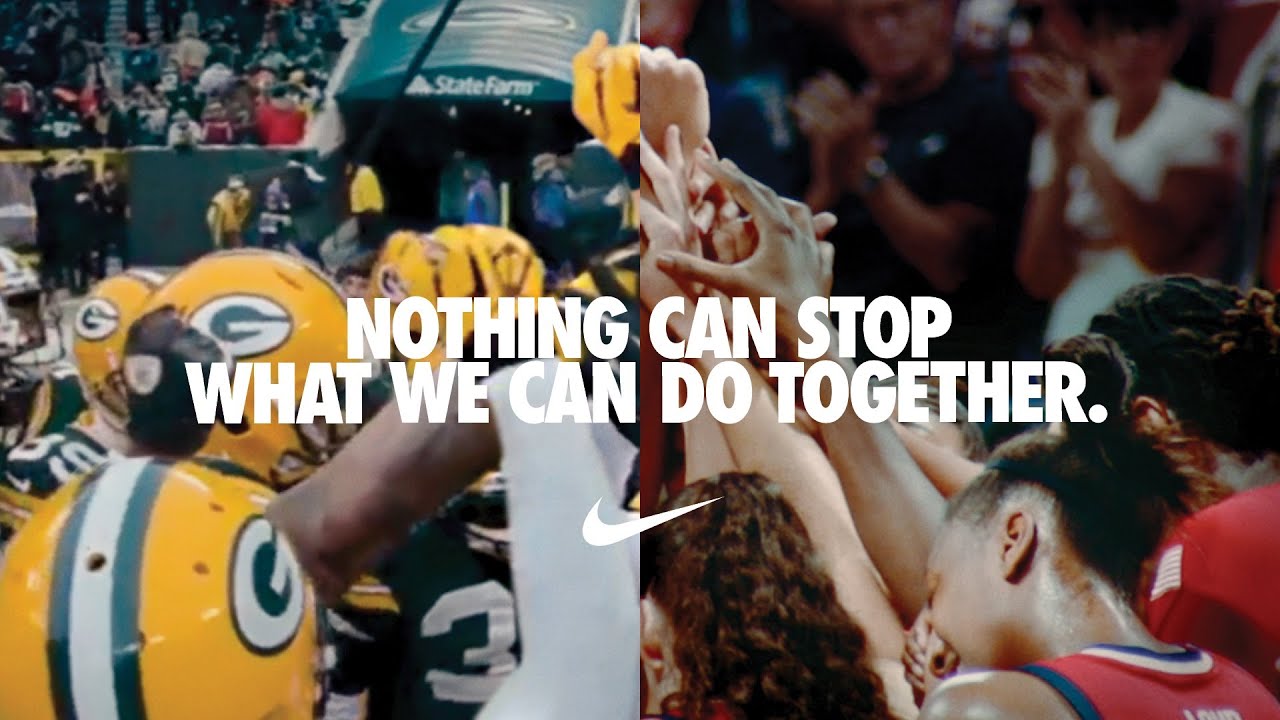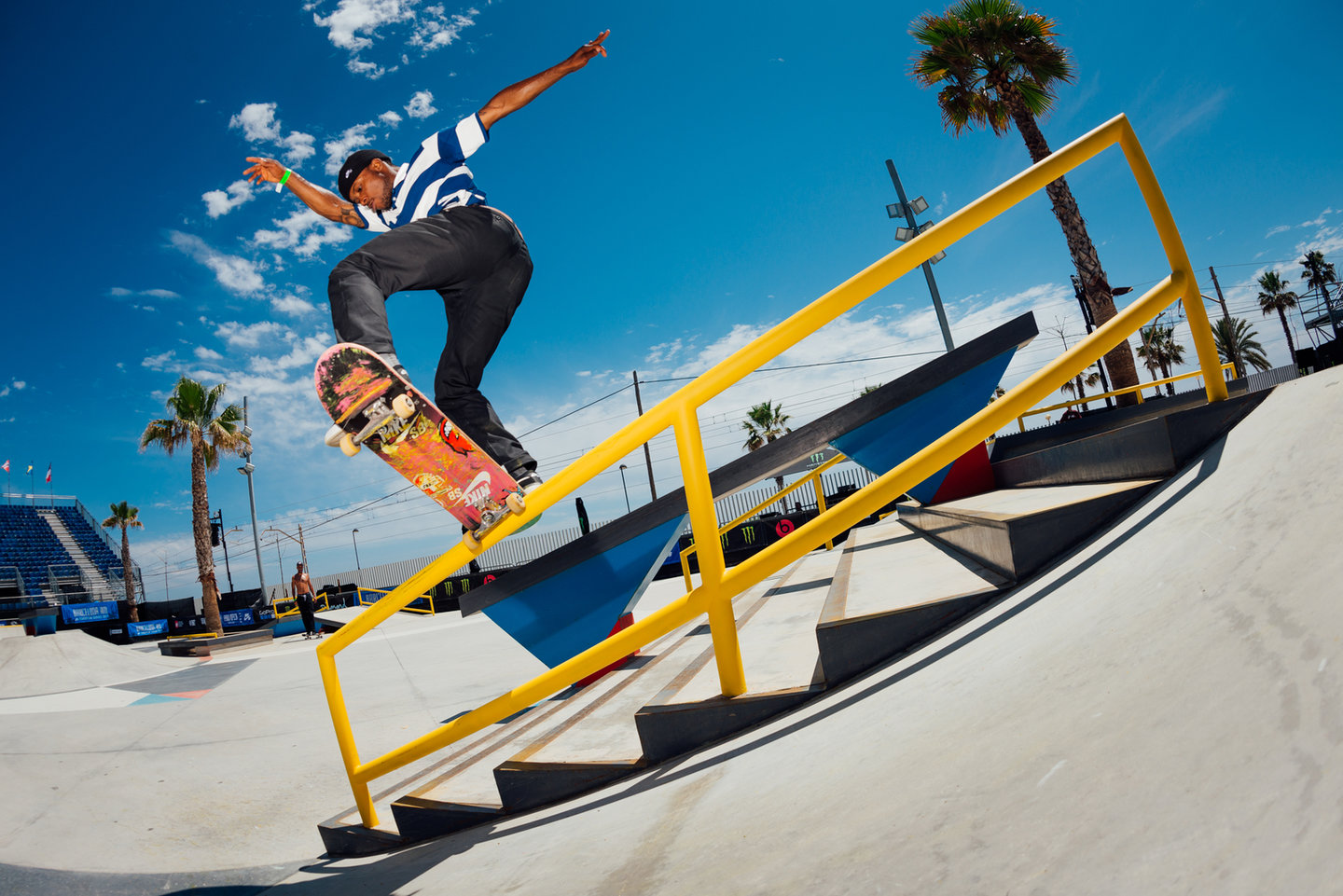How do you plug the content gap when there is no live sport?
Unlike other TV networks that could fill their programming line-up with re-runs, movies and news during the postponement of live events in the early months of the pandemic, sports broadcasters and streaming platforms relied on a regular flow of live sports events to attract loyal viewers. Even their non-live shows were mainly based on pre and post-match analysis, recent highlights and timely content.
In the US, before basketball’s NBA and ice hockey’s NHL suspended play, nine per cent of adults’ television viewing time was devoted to sports events, according to information measurement company Nielsen.
For ‘heavy sports viewers’ – the most avid consumers of live sports events – sport accounted for 26 per cent of their total viewing. Fans were hungry for content and broadcasters had to figure out a way to reach and maintain relationships with them without relying on their key live rights.
“We appreciate your patience as we work through modifications for the days ahead. Our programming team is hard at work to fill the holes on our networks, and we will provide updates when finalised,” Josh Krulewitz, vice-president of international sports broadcaster ESPN, said at the time.
Nowhere was the absence of live sport felt harder than at DAZN, the international over-the-top streaming platform.
A monthly, no long-term commitment subscription suddenly becomes a risky business model when everything grinds to a halt.
DAZN quickly learned its lesson, with acting chief executive James Rushton announcing in August: "The development of non-live content will play a major role in our expansion plans. As one of the key learnings from the pandemic, the relationship between non-live content engagement and customer retention has never been stronger.
“We have a deep understanding of our customers and we will look to develop a broader and more meaningful value proposition by providing a data-driven, personally curated mix of quality live and non-live content that will attract people to the platform and keep them coming back on a regular basis."
Digging into the archive
The first answer for ESPN, DAZN and other rights holders in the short-term was to immediately fill their schedules with replays of recent games, while negotiating with rights owners, leagues and federations on how they could make up for the lost content they had paid for.
However, as time went on and it was clear bigger events, headlined by the 2020 Tokyo Summer Olympic Games and soccer’s Euro 2020, were to be side-lined, broadcasters had even bigger scheduling gaps to fill – non-live content again would have to be used creatively to get them through the period.
Tom Barnes, vice-president of IMG Replay, the archive division of the international sports and entertainment agency, tells Sportcal Insight that as more and more live sport dried up, rights owners opened their entire archive portfolios to rights holders to get them through the period.
“During the official lockdown when there was very little live sport anywhere, we as a department were told by all our rights owners to open the archive so we effectively serviced 9000 hours of content for free to broadcasters,” he says.
“It really showed how valuable archive footage can be and the rights holders got creative with how they used it, say with the Premier League, which was due to finish in May, there was a fixed schedule planned for March, April and May but obviously all those fixtures were suspended.
“What broadcasters did, which I think was quite clever in some respect was play the same games as scheduled but using a classic match, so if Liverpool was meant to be playing Manchester United on a certain day and time, they played the best match between them from the past.
“It’s hard to understand if a consumer at home is going to watch a 90-mintute archive match over a live match - we don’t have the viewing data - but in the end it did help rights holders fill the gaps during what was a difficult time.”

Broadcasters turned to classic matches in their archives to fill the live void
IMG Replay sells archived content on behalf of a number of rights owners including the top-tier soccer leagues in England, Germany, Italy and the Netherlands, tennis’ ATP and WTA Tours, athletics’ Diamond League, mixed martial arts’ UFC, and golf’s Masters and British Open, as well as rugby, cycling, motor racing, figure skating, Paralympics and boxing content.
The department splits its programming into five different strands, including one to two hour highlights shows of events, documentary style programmes, reviews of seasons, goal compilations focused on soccer and classic matches and races.
But while broadcasters took the opportunity to dig into IMG Replay’s archive, others repurposed the footage more creatively to produce original non-live content.
The agency provided the archived footage used for sports manufacturing giant Nike for its iconic ‘You Can’t Stop Us’ advert launched during the live sports suspension, which has racked up 58.5 million views since July.
IMG Replay licenced eight different rights owners content to independent advertising agency Wieden+Kennedy, which sifted through 4,000 sports action sequences and chose 72 of them to combine into 36 split-screen moments, where the action on both sides appears to meld into one.
“This is the bread and butter of our business really – selling archive footage to producers who repurpose it for adverts, in documentaries, reviews and things like that,” Barnes says.
“Twenty seconds of our content was used in that 90 second advert from the Paralympics, Wimbledon, the ATP Tour, Diamond League and The Open – that’s what we do day to day, we sell content for all sorts of types of programmes and what we’ve seen lately is an increase not only in interest in these kinds of rights but also people getting really creative with how they use it.”

Nike’s ‘You Can’t Stop Us’ advert has racked up 58.5 million views since July
Even before the live sports shutdown forced rights holders to think outside the box with how they repackage non-live content, many were already exploring ways to evolve the traditional highlights and review models for the digital space.
It is something that Joe Carr, chief executive of Thrill One Sports and Entertainment, the action sports operator and media company, believes can be used to bring in new audiences if rights holders use it in the right way.
“The challenge in today’s digital landscape is that, with so much content available, it’s tough for brands to stand out and cut through the clutter,” he says.
“I think the key to successfully repurposing old footage of producing compelling highlights is context. What captioning or audio are you adding to contextualise that particular clip for the consumer? Does that clip spur debate in the comment section? Can the highlight take advantage of whatever is occurring in the broader social landscape as it relates to current memes or trends?”

Joe Carr, chief executive of Thrill One Sports and Entertainment
Thrill One launched in January 2020 following a merger of Nitro Circus, the action sports touring group, the Street League Skateboarding series and production house Superjacket. With the majority of its audience being young and digitally savvy, the company has experience in repurposing archive content and creating new pieces to attract and retain their audiences.
“We are fortunate to have a pretty robust archive to mine for footage to repurpose,”Carr continues.
“With action sports we’re lucky in the sense that a triple backflip is just as amazing today as it was in the moment 10 years ago so archival footage resonates more with our audience than say an old regular season baseball game for Major League Baseball fans.
“We are also aggressive on the user-generated content front – both sourcing content from our top-tier athletes who are able to send in clips from their private facilities as well as regular enthusiasts and fans who want to be featured on our channel.
“I think you just need to do your best to be resourceful and try new things. Not everything will work but the beauty of social and digital content is that you can iterate and test until you eventually hit the mark.”
Social media and short-form content
For Carr and Thrill One, producing a steady stream of non-live content has always been just as key as live events to increase fan engagement and build popularity around the world– a lesson that many other rights owners and broadcasters have realised over the past few years.
“A rights holder’s clip and highlight strategy is as important for fan acquisition and engagement as the live games, particularly with younger generations consuming most of their video content through social media on mobile devices,”he says.
“There are only so many hours of live in a given day or year, so clips are essential to continuing the conversation and delivering multiple interactions with audiences on a daily basis.
“Highlights across platforms like Instagram, Facebook and Twitter are probably the most consumed pieces of non-live content for sports fans. Gen X and older millennials used to have to wait for [ESPN’s] SportsCenter to air in order to learn what had happened in the world of sports that night.
“Younger generations now have highlights, scores and news at their fingertips and are getting all the updates they need through social media – and almost in real time as well. That’s why ESPN has launched SportsCenter on Snapchat as a means of bringing that brand to a younger audience at their plain of consumption, as opposed to trying to pull a teenager over to linear television.”

Thrill’s non-live content strategy has been as key as live events
The way sports brands communicate with fans is continuously evolving. The emergence of social media channels like Facebook, Twitter, Instagram and YouTube has made it vital for sports brands to understand where fans are engaging, and to evolve alongside those channels.
While broadcasters had already started to increase their production of short form content on social media as a part of their long-term strategies, during the shutdown of live sports, Anna Chanduvi, sports media partnerships manager at Facebook, says broadcasters accelerated their output on the platform as a way of keeping users engaged with their brands, which has since carried on after live sports came back on.
“While a lot of archive was used at the beginning, publishers then started to really tap into their resources,” Chanduvi says.
“The BBC [the UK public broadcaster] did a live home work-out series every day with an Olympic athlete which they streamed live on Facebook during the period the tournament would be on, while [international pay-TV broadcaster] BeIN Sports did something similar in France. Because of the regularity of their content, they were both able to drive loyal viewing, bring the same people back week-on-week to view their unique content.
“Since then the publishing patterns have unlocked a lot of opportunities and trends for our publishers so now coming out of this Covid period, they are more aware of who their audiences are and how they can engage those audiences in a meaningful way with what type of content, and we are seeing a shift to now publishers thinking ‘how can I create intentional viewing from the assets that I own within my broadcasting operations, whether that is tapping into reporters or doing more behind-the-scenes type content’.”

Anna Chanduvi, sports media partnerships manager at Facebook
It is a trend that Ronan Joyce, EMEA sports team partnership lead at Facebook, has also seen with sports clubs, which have been leaning more heavily into their non-live content, even before the shutdown of live sport to capture a new revenue streams.
“One thing that has been happening for some time was the move towards archive content being the best performing content strands for soccer clubs and it has been the longer-form content, things like the three to 10-minute storytelling piece about big club rivalries that were performing really well during lockdown. Certain people were watching for at least a minute and returning week-on-week to watch more,” he says.
“We are at the stage with our publishers where they are quite advanced and good at knowing how to make revenue directly from the platform such as our Instream product on Facebook, basically our direct revenue share system from adverts served around content.
“I think what a number of clubs have started to say is ‘okay, we’ve got a number of sponsors across the different categories but not every category so if we use the advertising product Facebook has we can take in revenue incrementally from all the other advertisers out there who are not necessarily sponsors of the club.”
Documentaries and long-form content
The success of the ESPN/Netflix documentary, The Last Dance, the 10-part series on Michael Jordan’s career with the Chicago Bulls, shone a spotlight on archive content being used as a storytelling medium during the suspension of live games.
Rarely in recent memory has a TV show been so propitiously timed.
Over the course of its run, The Last Dance, averaged more than 5.6 million viewers per episode during its five-week run, and was pulling in nearly 13 million viewers an episode from on-demand viewing.
Major league teams are sitting on decades of game and behind-the-scenes footage, some of which has not been seen since match day.
Scattered with unseen glimpses of off-guard moments, confrontations and celebrations, the archive has been a vast and largely untapped resource. It can, if used well, offer the perfect opportunity for teams and leagues to reinforce their brand and champion their players through storytelling.
Sports documentaries are not a new format and filmmakers have long explored the political and personal stories behind sport. But the rise of subscription services has helped widen the audience for sports documentaries and allowed previous feature-length pieces to be made into more episodic content.
Major soccer clubs have recently got in on the action, with Spain’s Barcelona and England’s Manchester City and Tottenham Hotspur documenting particular seasons or a period of time.
IMG Replay worked with the Premier League and Amazon on the 2019 and 2020 ‘All or Nothing’ documentary series with Manchester City and Tottenham Hotspur, respectively.
Eager fans of the sport have jumped at the chance to enter the previously out-of-bounds sanctity of the dressing room, while teams have been more willing to open their doors to production teams for international exposure, says Barnes.
“There has been a bit of a sea change when it comes to leagues not wanting fans and the public to know how the sausage is made, so to speak – they just want to make sure that their sport is portrayed in the best possible manner,” he says.

Tom Barnes, vice-president of IMG Replay
But revealing the story, warts and all, is something that Anouk Mertens, chief operating officer of Eleven Sports Group, the international subscription broadcaster, believes is key to making successful sports documentaries in the future.
Mertens is also managing director of production company Neo Studios, part of the Aser Venture Group, owned by Andrea Radrizzani, that also includes Premier League club Leeds United and Eleven.
Neo worked with Amazon on the documentary series ‘Take Us Home’, charting two seasons of Leeds’ quest to gain promotion from the English Championship to the Premier League.
The series chronicled the team’s 2018-19 and 2019-20 campaigns in the Championship and were not only given unprecedented access to Leeds’ players and boardroom but also given free rein to show the club’s not-so glorious ending to the 2018-19 season, which included the infamous ‘spy-gate’ and their failure to secure promotion.
“The reason we within the Acer Venture Group decided to launch Neo Studios is because we felt that there is really a demand, not only from our own channels but from other streamers and broadcasters too, to have this non-live content to accompany live sports, to give fans a deeper connection with teams,” Mertens says.

Anouk Mertens, chief operating officer of Eleven Sports Group and managing director of Neo Studios
“For us it has been important that all the content is driven by human stories, that’s how we try and differentiate ourselves. You can make a very linear sports documentary, just telling the events that happen during a season with snippets of behind-the-scenes clips but what really sets this content apart and pulls in viewers is telling it from a different perspective.
“It’s what we tried to do with ‘Take Us Home’, we wanted to give a view not only of the team and the coaching staff but the fans and city, what impact getting back into the Premier League has on this city and not just revolving around big club personalities.
“We said we needed to tell the reality of what was happening and not everything was beautiful. The last episode of season one is still my favourite because it’s really emotional, everything falls apart and it is a big disappointment for everyone but it did show the reality of what it is like to follow a club through thick and thin.”
And while many thought that a Leeds-based documentary about a second-tier team would only appeal to the fanbase, it managed to gain traction in international markets.
Both series were shown exclusively on Amazon Prime in the UK and US, but were then sold onto YLE in Finland, Stod2 Sport in Iceland, TVP in Poland and ESPN in Latin America by Goldridge Media, the international rights seller.
Opening the taps
The lack of live sports has broadened the scope of what rights owners and holders can create using archive and non-live content but like with all coronavirus-driven trends, this has been an acceleration rather than a change maker.
But with live sports back on and a packed-out calendar scheduled for next year, will the trend continue or will many fall back on an overreliance on live media rights?
“When the sports world effectively shut down following the onset of Covid, broadcasters were scrambling for content to fill the gaping holes in the programming grids and the demand for documentaries, repurposed archives and more creative storytelling peaked,” says Carr.
“There is a danger now that live sport is back on television, that pressure has been alleviated and you could even argue that there is a surplus of content, perhaps even cannibalisation.”

The coronavirus-enforced shutdown of sports accelerated rights holders’ non-live content strategy
But Mertens disagrees. With the taps open and rights holders and owners realising the potential value in non-live rights to complement their live offering, she is certain the trend will continue.
“The interest was already there pre-Covid and really swung upwards during it but what we are seeing is a continuation of that demand so we want to keep that kind of story telling going,” she says.
“Obviously the pandemic is still affecting how we can shoot and travel on the production side of things, but with such a rich source of archived content out there, we have certainly been coming up with more creative premises for shows that fans will enjoy.
“It’s a trend that I think will continue because it sits so nicely next to live content, it creates engagement with viewers and supports the live content so well so the combination of the two is only going to increase in the next few years.”
Joyce, on the other hand, believes it’s up to the rights holders themselves to understand the value of their non-live content and place more resources into it.
“Everyone is so busy now live sports is back on,” he notes. “The constant relentless nature of games means if more non-live content isn’t going out, it’s more of a resource issue and a lot of the work I’m trying to do is evidence that fans are responding to help clubs go make the case internally that they actually need to devote more resources to this type of content.”
It is also a message that Barnes and IMG Replay have been pushing to rights owners of smaller sports, who have not yet tapped into the riches of their archive.
“We’ve been trying to educate rights owners for the last 10 to 15 years, saying to them, ‘Look, digitise your archives, log your archive purely from a heritage and commercial perspective because if it is all centralised and easily accessible, you’re going be able to sell these rights and create new revenue streams from it.
“What has been really interesting during this period is that there are some rights owners that haven’t done that journey and they are kicking themselves because they haven’t realised until now what a rich source of content it can provide, not to replace live sports but to accompany it, grow the sport and get people more engaged.
“I say to those people, really do it because the evidence is there, people want to engage with this content and this is the first step to doing it.”